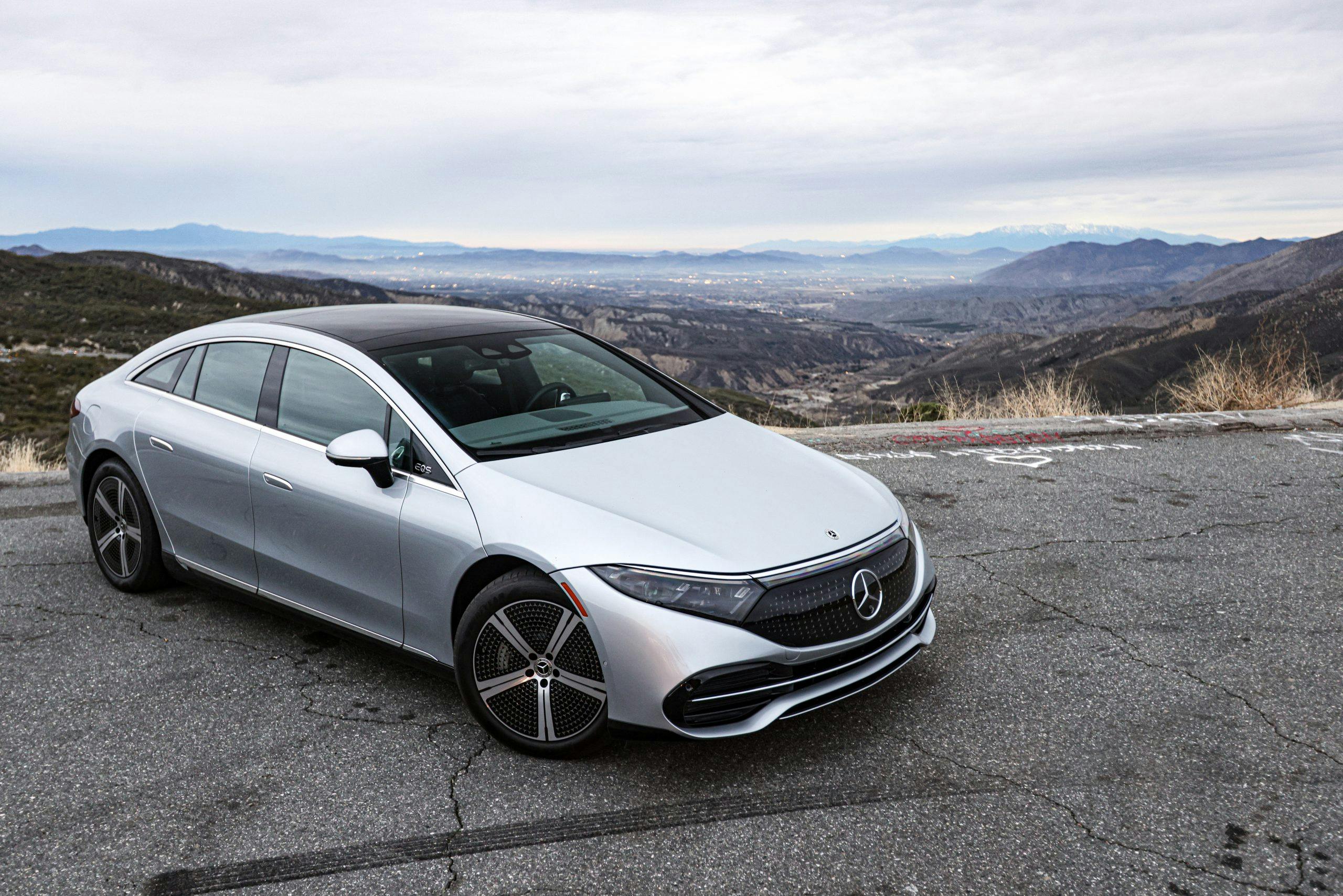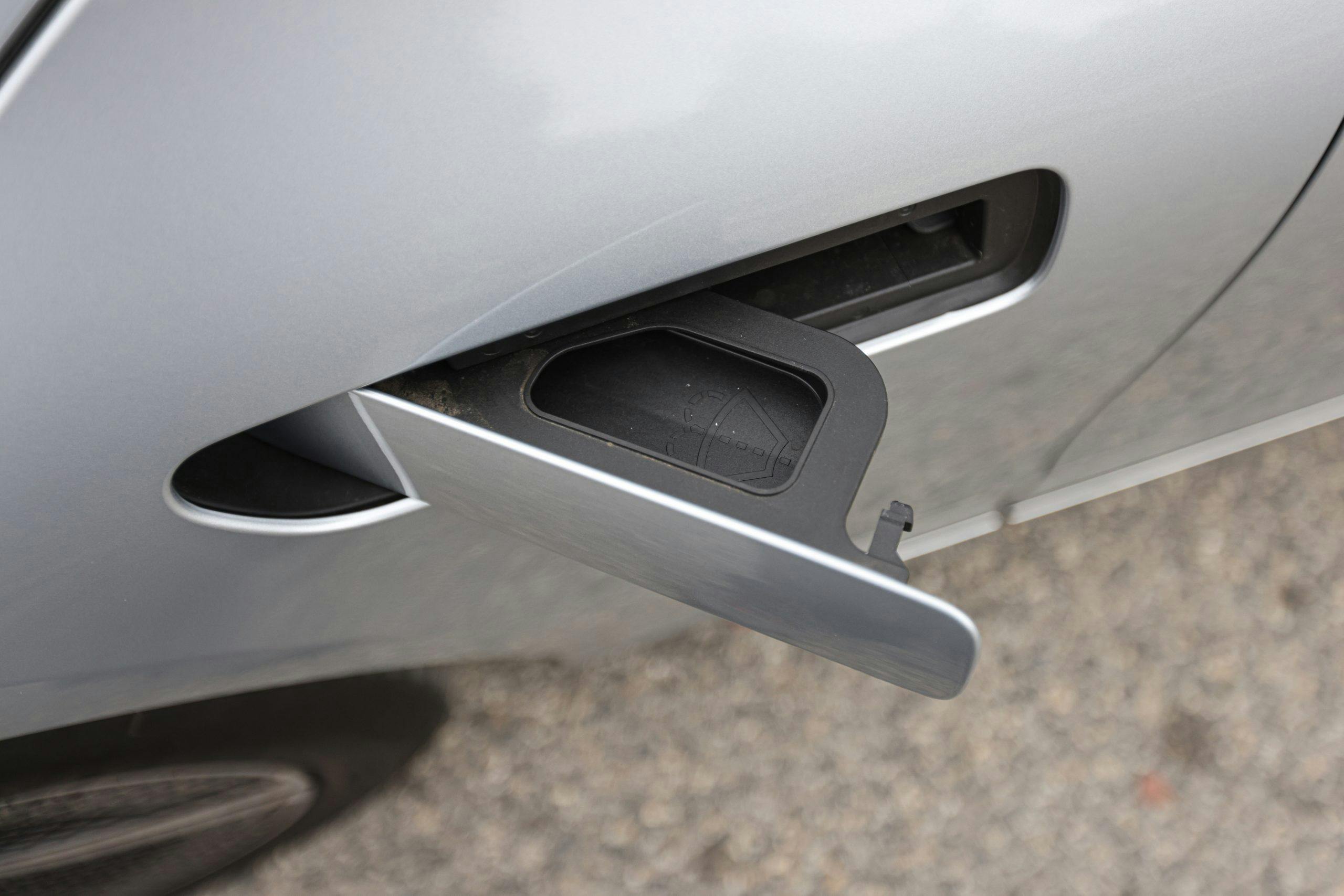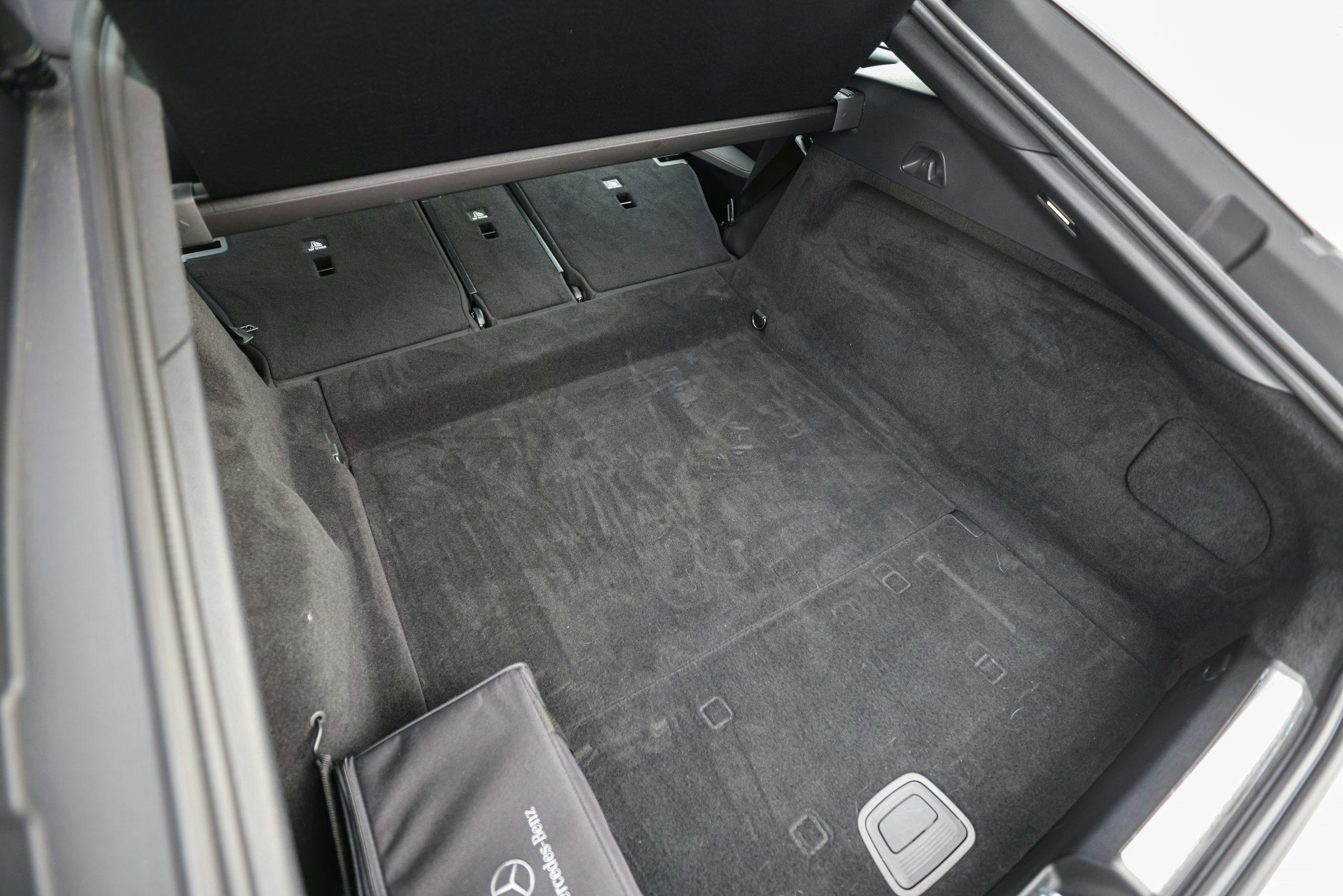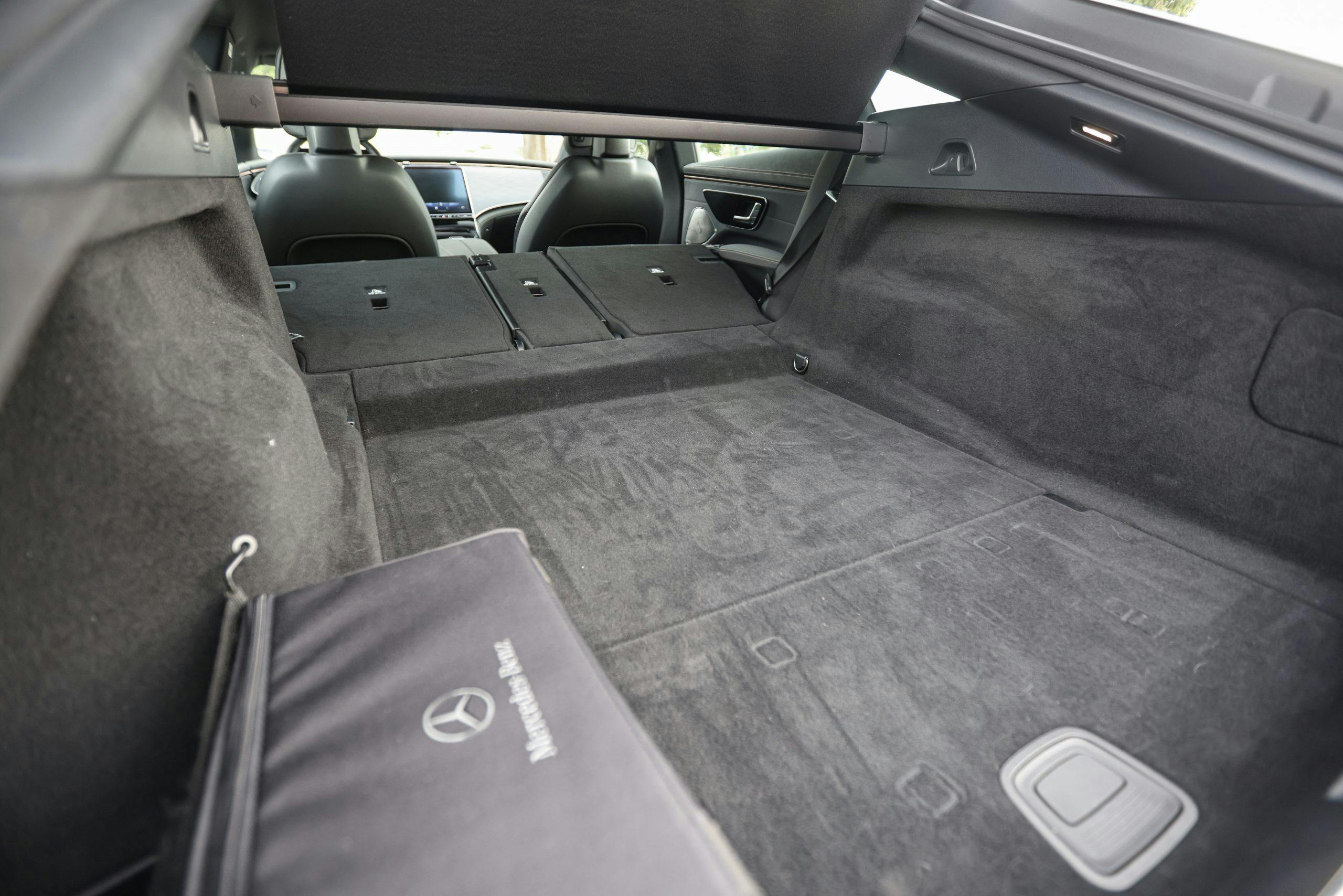Review: 2022 Mercedes-Benz EQS 450+
The problem with the future is that it doesn’t come with an owner’s manual. If it did, everyone would get their first electric-revolution vehicles exactly 100 percent right. For example, can Mercedes-Benz be faulted for execution flaws on its EQS all-electric luxury liner? Well, can Porsche with the Taycan? Okay, they both had Tesla (and now Lucid) to show them the way, but the EQS is better than the aging Tesla Model S in a few areas, namely luxury appointments and refinement. And it whomps the Taycan in range, owing in part to Porsche’s obsession with meaningless performance metrics like 100-to-150-mph acceleration. Which leaves the EQS, base price of $103,360, as a decent first draft.
The sleek, interstellar EQS is the flagship of Benz’s forthcoming EQ sub-brand of electric vehicles, which at this point includes the EQA small crossover, EQB medium-sized crossover, and EQE mid-size sedan. Obviously, the names track their gas counterparts, the 17-foot-long, 5600-pound EQS being comparable—despite having a hatchback—to the company’s S-Class limo. The car squats and sprawls over the pavement like the glistening globule of future-vision that the designers were undoubtedly aiming for. With the flush grille and flush wheel covers with tiny flush Mercedes stars in them, it practically dares the wind to take offense at its passing. Indeed, Mercedes claims a 0.20 drag coefficient, the slipperiest of any current production car.
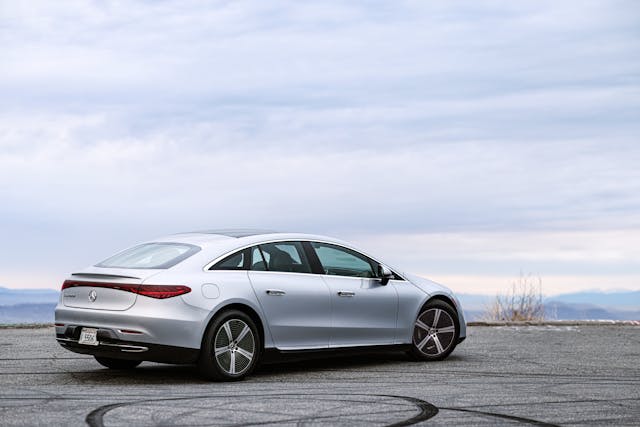
Walk up to it with fob in hand and the onboard brain senses your presence, the illuminated door handles silently gliding out from recesses to accept your reaching hand. That’s when the trouble starts. The door-release mechanism is clunky and reluctant, and the doors don’t self-seal as they do on the S-Class (granted, the EQS is heavy enough as is). While everything is neat and orderly inside, with designated parking spots for phone, keys, and Slurpees, the cockpit lacks the epicurean richness you’d expect in an S-Class, even while handily outclassing the blow-molded Model S. The palette is muted and somewhat plain and the sliding door that hides the center bin has a slightly flimsy, plastic-meets-plastic feel that betrays where a cost was cut.
The bottom cushions of the rear seats, which can fold to create a huge cargo area, are downright skimpy—at least in this, the base EQS—and they’re high off the floor, shoving the heads of taller folk into the headliner. Also, duck your head to get in, because that wind-cheating roofline cuts a low arc towards the back. We did like the four soft pillows that Mercedes affixes to the headrests to give your noggin something plush to sink into on longer drives.
An illuminated band of light rings the cockpit and, like the face of Dr. Theopolis, the brainy computer disc in Buck Rogers, expresses the car’s mood in color. It’s a cool blue when everything is cool, flashing to red if you do something dumb, like try to merge into the next lane while a car hides in your blind spot. Better get used to cars that scold, for that is the future and you won’t have to wait until the 25th century for it.
One quirk we found annoying is the lock function for the charge port. Insert a standard J1772 charging gun and the car locks it in, presumably so others won’t steal it at communal chargers and stick it in their own cars. Mercedes (and some others) have gone to great lengths to stop it, but is this really a problem? The EQS requires that you to fumble for the fob, unlock the car, then push an unlock button next to the charge port before it will release the charger. Every time. No doubt, the many EQS owners who will do most of their charging at home will find this utterly maddening.
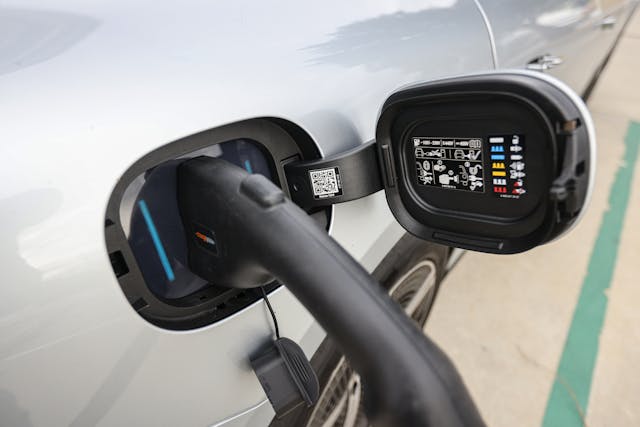
Our EQS didn’t have the optional new Hyperscreen, a massive 56-inches-long wrap-around digital experience that turns the dash into one gigungus touch screen. Which is fine, because the 12.8-inch OLED central display and digital instrument cluster seems iPad enough for one car. It took three days of tapping screen icons in Mercedes’ proprietary MBUX interface to figure out how to dim the dash lights. Elsewhere in the system, the car will hunt down charging stations for you and presents a fairly complex picture of your range and driving consumption. The navigation screen is huge and can be echoed in the driver’s cluster, all in 11-zillion-color high-def and via fast-acting processors that react about as quickly as your fingers can. Indeed, there are no real buttons in this car; even the seat controls on the door and the steering-wheel “buttons” are touch-capacitive surfaces awaiting the heat of your digits to activate something.
While in motion you can dial up sporty or range-minded modes, and the EQS will even do decent one-pedal driving when you select max regen with the steering wheel paddles. However, the car defaults back to “normal” on shutdown and you must select those modes every time you get in. This car wants desperately to be “normal.”
Potentially the biggest design problem is that there’s no front trunk as is the case with the Tesla and Lucid. You can see buyers quickly dismissing the EQS on that basis alone without taking time to study the stats. The EQS rear cargo area offers up to 63 cubic feet of space with the split rear seats folded, a little more than a Model S, and 22 with the seats up, a little less than the Model S. But the Tesla also supplies 5 more cubic feet up front (the Lucid has almost twice that much in front).
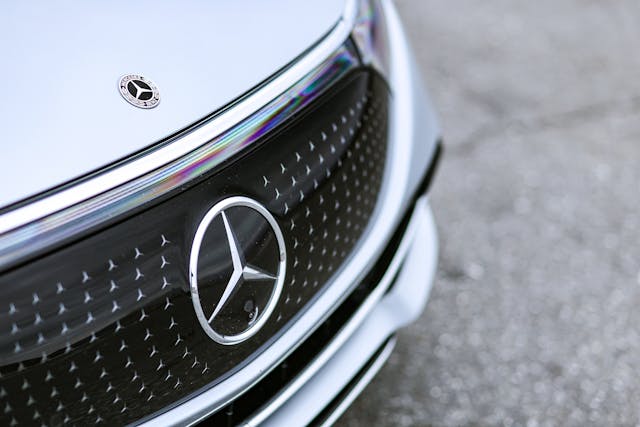
The EQS450+ definitely isn’t chasing those other guys in horsepower, with an advertised 329 horses, 406 pound-feet of torque and 5.9-second zero-to-60 time. The hotter EQS 580 4Matic all-wheel-drive version, base price of about $121,000, offers a combined 516 horsepower and a claimed 60-mph time of 4.9 seconds, and a forthcoming AMG EQS will beckon the real pilotos with money to burn. Will it be as quick as a Model S Plaid? Who knows, but so far Mercedes doesn’t seem interested in scrumming with Tesla or Lucid for acceleration supremacy.
Range is this EQS’s métier, up to 350 miles on a juicing, 80 percent of which can be done in 30 minutes off a 480-volt DC fast charger. Between charges, the EQS 450 floats, silently levitating its bulk up the freeway with a spongy ride and some agility thanks to a competent suspension aided by a rear-steer system. As in all current EVs, the majority of the weight is below the floor, so the subsequently low center of gravity gives the car a planted feel that any gasoline car in its weight neighborhood would struggle to achieve (though Bentleys do a decent job of it).
But despite its overall agility, the EQS never feels anything less than 2.5 tons of an electric future … that is still TBD.
2022 Mercedes-Benz EQS 450+ Sedan
Price: $103,360/$107,389 (base/as-tested)
Highs: A slinky vision of the future. Nicer inside than a Tesla. All ate up with range. Quiet as a church on Monday.
Lows: Not quite an S-Class inside. Not Tesla fast. No front trunk. That locking charge port, argh!!
Summary: Benz’s first draft of the future is lovely and quiet, but it could stand a little editing.



